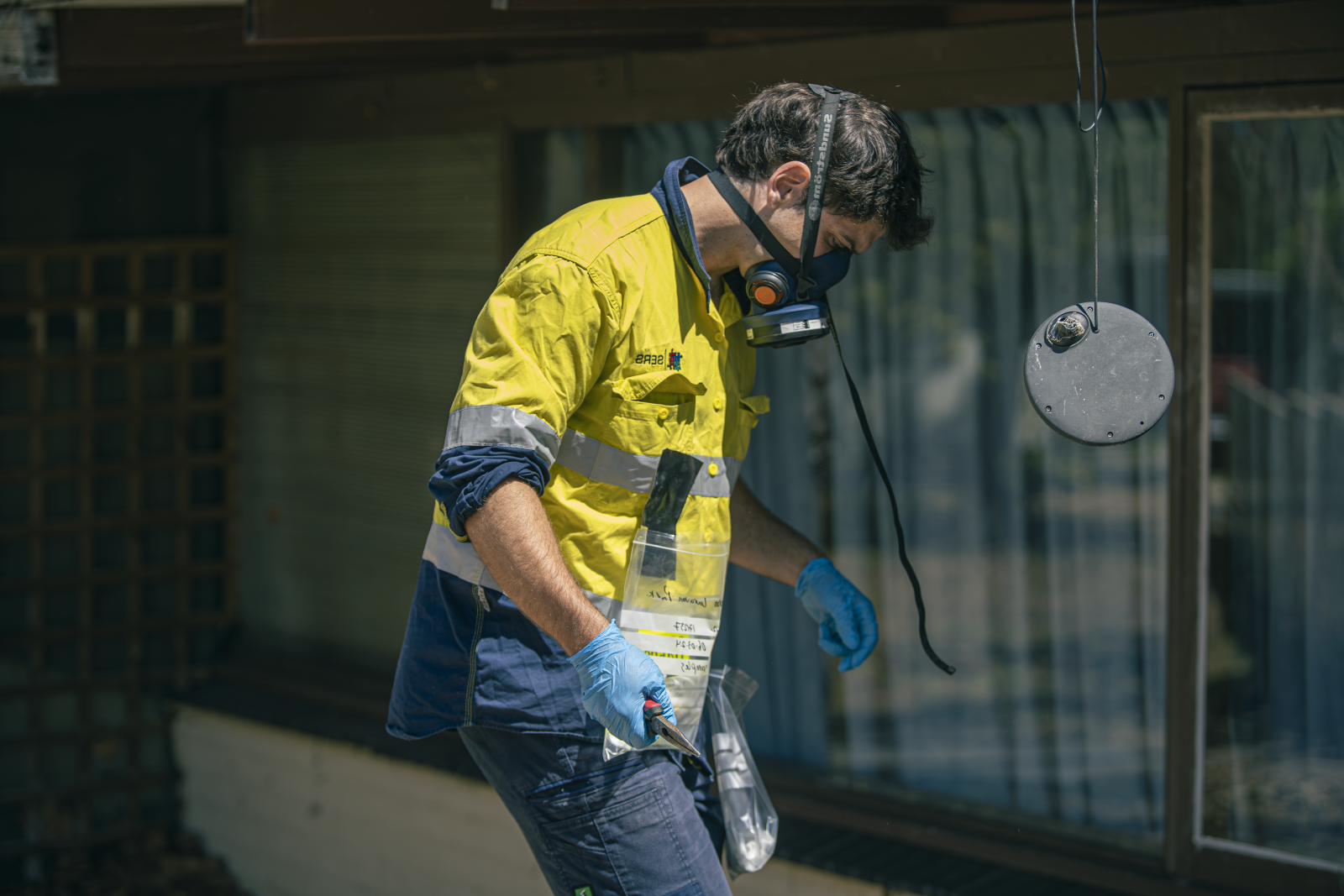If you’re a homeowner in Western Australia considering undertaking some renovation or extension work, you may have been asking yourself if you should test for asbestos before renovating your home.
You’re no doubt aware that the Perth area is well-known for its tradition of using asbestos in homebuilding, and you may be worried that carrying out any structural work may cause the release of dangerous asbestos fibres.
Essentially, the answer to your question is that if your house is more than a few decades old, you’re right to be concerned about the presence of asbestos. This means you really should ensure that rigorous asbestos testing is performed before starting any work. Even relatively non-intrusive jobs such as installing alarm systems can disturb asbestos, so it’s a matter you should take very seriously.
Read on to find out the why’s and how’s of asbestos assessment and why asbestos removal is sometimes necessary.
Asbestos in the Home
First, a few relevant facts about asbestos. Asbestos has many qualities which make it ideal for use in construction; it’s strong, a good insulator of both heat and sound, and it’s highly resistant to fire and water.
The downside is that it poses significant health risks, being responsible for a range of lung conditions including mesothelioma and neoplasms. Authorities believe that even short exposure to loose asbestos fibres can result in long-lasting health problems.
However, just because asbestos was used in the construction of your home doesn’t mean there’s a problem. That’s because in its bonded state – when it’s in the form of sheets or cement – asbestos doesn’t pose a health risk. You can live in a home for decades without being aware of or affected by asbestos.
Problems only occur when the bonded asbestos is disturbed as could happen during a renovation, rebuilding or some event such as a fire or flooding. When this happens, the asbestos can become ‘friable.’ This means it crumbles, letting loose tiny fibres that can become airborne. Breathing in these particles is dangerous and often has deadly consequences.
One upshot is that you may have been living in the property for years or even decades without issues, that doesn’t mean the building is asbestos-free. It may simply be lurking in your walls, roof or under your floors.
For this reason, if you plan to renovate the home, it’s essential to know beforehand whether the property is at risk through thorough asbestos testing. If it does contain this material, you’ll need to have the asbestos removed by professionals before even thinking about starting work.
Where is Asbestos Found in the Home?
Because of its many qualities, asbestos can be used all over the home. Its most popular use was for wall cladding where it serves as an insulating, fireproof layer. It’s also common in roofs, flooring underlay, and with pipes and other plumbing fixtures. Other uses included attic and pipe insulation, soundproofing, roofing shingles, siding tiles, floor tiles and adhesives.
Another factor to bear in mind is that asbestos can contaminate the soil and water around the home. When asbestos breaks down or is damaged, it can escape and pollute areas near the building. A professional asbestos consultant will test the entire site if he or she suspects contamination has spread to nearby areas.
As you can see, it was used in so many ways in the home that its detection requires a thorough assessment. It’s vital to employ the expertise of a qualified and registered asbestos consultant with access to top-of-the-line laboratory facilities.
So how can you tell if your home has an asbestos problem? The fact is that there’s no easy way to detect asbestos in the home. Visual inspection alone cannot safely identify its presence. Its fibres are tiny and impossible to reliably detect with the naked eye. For a while, certain types of asbestos board were required to be marked with warning labels to indicate their status, but this only began in 1979.
In fact, the only reliable way to test for asbestos is to carry out an examination using a polarising light microscope in a lab accredited by Australia’s National Association of Testing Authorities (NATA).
As it’s not possible to confirm the presence of asbestos without rigorous laboratory testing, many DIY renovators are at risk. Even tasks as simple as replacing floor coverings such as vinyl tiles or bathroom tiles can lead to the release of asbestos. Larger jobs such as replacing roofs or gutters are even more dangerous.
Another issue to consider is that the symptoms of asbestos contamination can take decades to appear. Asbestosis (fibrotic lung disease) shows symptoms up to ten years after exposure, while the dreaded mesothelioma can take up to 40.
What Types of Asbestos are Tested For?
To begin, let’s look at what asbestos is exactly. Asbestos is a natural mineral fibre that can be woven to form fabrics or mixed up with cement to create materials with some desirable qualities for use in construction. Builders started using asbestos in the late 19th century, and most homes made locally from 1930 to 1983 used asbestos to some extent.
It comes in six major forms, all of which are extremely toxic, and three of which were commonly used in building.
The most common (90 percent of commercially-used asbestos in the world) is chrysotile. Known as white asbestos for its colour, it features long, white curly fibres whose fineness and flexibility make it ideal for use with cement and roofing materials. Its high heat resistance also made is a popular choice for use in roofing.
Next is amosite, a brown asbestos. Its highly durable and heat resistant properties make it suitable for use with cement sheets, and electrical and plumbing insulation. Amosite is a particularly pernicious form of asbestos.
Crocidolite, or blue asbestos, features very fine fibres. This along with its brittleness make it one of the most insidious types of asbestos as it easily crumbles and becomes airborne.
What Health Risks are there?
All types of asbestos are highly toxic if inhaled and can lead to serious lung conditions including mesothelioma, asbestosis and lung cancer.
One major problem with health conditions related to asbestos is the time taken for them to manifest themselves. The fibres enter your lungs and lay dormant for years. In many cases, patients don’t develop symptoms until 10-40 years after exposure to asbestos.
Given that it’s impossible to identify asbestos with the naked eye, it makes asbestos testing extremely important before renovating your home as it could cause serious issues way in the future.
Are There Other Hazardous Materials to Test For?
Asbestos is the most common hazardous material found in older homes, but you need to be careful of other substances, especially lead. Lead paint was used in Australia until 1997, so many older homes can contain high levels of lead either in the painted walls or outside in the soil. It’s especially toxic when it deteriorates. Lead can cause serious health problems including nerve damage, so it needs to be dealt with before starting work and renovations. Like asbestos, lead demands professional attention.
Other contaminants that may be found in older homes include polychlorinated biphenyls (PCB) which used to function as an insulating fluid in certain electrical components. Australia banned PCBs decades ago, so any electrical gear imported later than 1986 or made after 1979 should be PCB-free.
If you suspect your home may be contaminated with any of the above, you can have it tested along with asbestos as part of an overall hazardous material assessment. If contamination is found, you can have it removed as part of a site remediation process.
Conclusion
Renovating a home is not just a significant financial investment, it’s also an investment in your family’s future. So be sure your home is safe and free from contaminants such as asbestos by undertaking thorough asbestos inspection and testing before starting any renovation.
Moreover, if you’re planning on updating an existing home, especially one in poor condition, you should have a thorough dilapidation survey carried out before making any structural changes. This will include a rigorous asbestos testing component.
One nice benefit of asbestos testing and removal is that it will enhance the value of your home. Declaring your home asbestos-free will make it a more desirable acquisition when it comes to selling, so asbestos detection and removal makes sound economic sense as well as provides you with peace of mind
Just be sure to do it correctly. Due to the hazardous nature of the material, asbestos removal is a task that only a skilled and certified asbestos consultant with the right equipment should carry out.
Site Environmental & Remediation Services Pty Ltd (SERS) has been offering asbestos consultancy services to Perth homes and businesses since 2008 and is well-equipped to test your home for asbestos. Should asbestos be found, we have the expertise and trained staff to efficiently remove asbestos from your residence, so you can continue your renovations worry-free.


